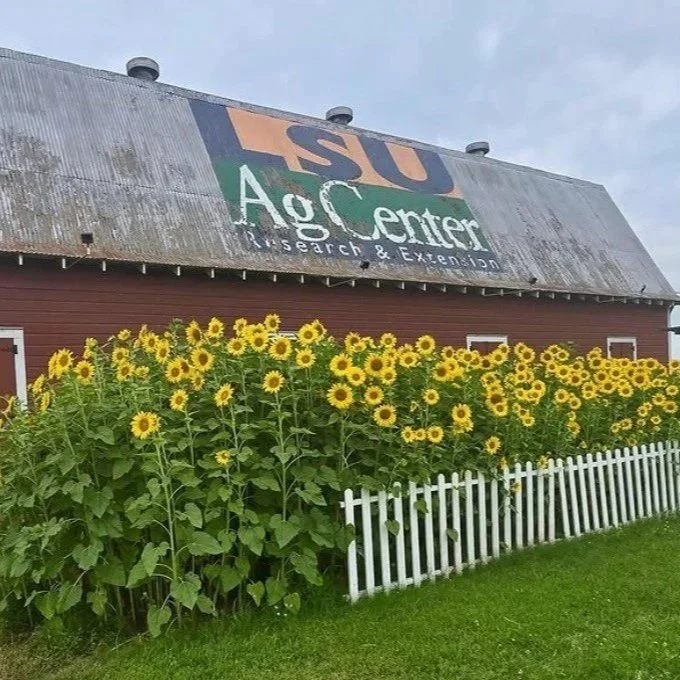The LSU AgCenter is proud to announce $1 million in federal funding that will supercharge ongoing initiatives aimed at stamping out invasive species that threaten agriculture and natural resources in Louisiana and across the Mississippi River valley.
Read MoreLouisiana farmers experiencing financial pressure from declining crop revenues and high input costs will receive federal assistance through a $12 billion program announced by the Trump administration.
Read MoreMost Louisiana farmers are facing an uncertain future as low commodity prices have them struggling to stay afloat. It appears that 2026 will continue to bring headwinds for most agricultural enterprises in the state. LSU AgCenter correspondent Craig Gautreaux has this report on the 2025 crop year for Louisiana.
Read MoreFrom fish movement to oyster reef restoration, Jeff Plumlee’s work at the LSU AgCenter and Louisiana Sea Grant is redefining fisheries ecology in Louisiana. Because of his innovative work, Plumlee was named an Early Career Research Fellow by the Gulf Research Program of the National Academies of Sciences, Engineering and Medicine.
Read MoreWith about half of Louisiana’s — and the nation’s — farmers facing dire financial straits, agricultural communities are hoping the $12 billion short-term relief ordered by President Donald Trump earlier this month will be enough to offset losses from trade wars, tariffs, depressed commodity prices, and increased planting costs.
Read MoreRecord high production costs coupled with weakening commodity prices for major Louisiana row crops have substantially decreased farm incomes, adversely affecting operating margins for agricultural producers in Louisiana to such an extent that operating margins for soybean farms have diminished over the past three consecutive years. The severity of the decline encompasses negative margins for corn, cotton, rice, and soybean operations. The outlook for the farm economy moving forward from 2025 into the 2026 crop year is concerning for farm survivability.
Read MoreEach year the LSU AgCenter tests both commercial and experimental soybean varieties entered in the state Official Variety Trials by private seed companies and university breeding programs. The LSU AgCenter also includes a reduced number of varieties in large-plot, on-farm demonstrations to increase the number of locations and environments in which varieties are evaluated. From these, a grower should choose several adapted to an individual farm. Information in the tables can help producers make these important decisions
Read MoreLSU AgCenter scientists are seeing promising results in their ongoing efforts to restore roseau cane stands in coastal Louisiana, a critical step in protecting the state’s fragile wetlands.
Read MoreLand-grant universities that conduct agricultural research, extension and education play a valuable role in supporting rural America and securing the nation’s food and fiber systems, a U.S. Department of Agriculture official told LSU AgCenter and Southern University Ag Center employees during a visit to Baton Rouge
Read MoreAgricultural producers throughout Louisiana are embracing precision agriculture — a management strategy that relies on drones, sensors, artificial intelligence and other advanced technologies to collect data and make informed decisions to improve crop yields.
Read MoreAgricultural producers throughout Louisiana are embracing precision agriculture — a management strategy that relies on drones, sensors, artificial intelligence and other advanced technologies to collect data and make informed decisions to improve crop yields.
Read MoreFirefly populations have hit historically low numbers in Louisiana and other parts of the country where fireflies are native. The Town of Jean Lafitte has reached out to the LSU AgCenter to work on a plan to re-establish firefly populations in the Wetland Trace boardwalk trail. Aaron Ashbrook, the urban and peri-urban extension entomologist at the LSU AgCenter, says part of that plan involves planting 375 native plants within a 1,500 square-foot area.
Read MoreLSU AgCenter scientists and researchers are constantly on the lookout for invasive pests that can decimate crops and herds and lead to significant financial losses for farmers and the local economy.
Read MoreThis month’s 2025/26 U.S. corn outlook is for greater exports and lower ending stocks. Exports rose 125 million bushels to 3.2 billion reflecting shipments to date. Export inspection data showed robust foreign demand during November and implies total shipments during the September-November quarter will likely exceed 800 million bushels, surpassing the prior high set during 2007.
Read MoreThe LSU AgCenter will hold its third annual Louisiana Agricultural Outlook Forum Jan. 22.
The free event will be held at the State Evacuation Shelter, 8125 U.S. Highway 71, south of Alexandria. Doors will open for registration at 8:30 a.m. The program will begin shortly thereafter and run until 2 p.m. with a break for a provided lunch.
Read More














